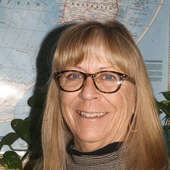- Research tips and McCook Brick Company- solid as a brick (12/16/24)
- Big Give appreciation and some railroad characters (11/15/24)
- George Randel becomes a landowner, gets married, and takes in a Buffalo Bill show (9/20/24)
- The memoirs of George F. Randel, early settler of Red Willow County (9/12/24)
- Vietnam War Memorial honors Nebraskans who served (6/13/24)
- McCook business promotions - just prior to 1893 stock market crash (5/30/24)
- Shall we dance? Meet you at the Gayway (12/8/23)
Parades of bygone days
Friday, April 17, 2015
Susan Doak
Southwest Nebraska Genealogy Society
A picture posted on the Facebook site, Remember when in McCook, Nebraska, led to research concerning parades during the early years of McCook. The picture depicted a Labor Day parade from 1911, complete with bands, large crowds of bystanders and many lovely ladies in their long dresses.
Before Sue Wells determined which parade it was by reviewing a book on McCook history, I had tried to find any notations of parades in the McCook Tribune. I had thought the picture might be the parade held when the cornerstone to the Temple Building was laid on Nov. 13, 1908. Entries in the Tribune noted that over 500 people were in attendance for that parade, including many notable members of the Masons; George Norris being the most prominent.
When that proved to be incorrect, I then looked at the GAR Encampment held in McCook on Oct. 10, 1889. (GAR being the Grand Army of the Republic whose membership was Union Civil War Veterans) The prominent speakers for the encampment were General McCook and Colonel McKeigham. Prior to reading this article I did not realize that General McCook (for which our city was named) had ever come to McCook. When I continued reading, the parade for the encampment was held at night so that parade was eliminated.
Then there was the Pythian Day Parade held by McCook Lodge No. 42, Knights of Pythias on Sept. 5, 1911. This fraternal organization was based on the play, Damon & Pythias, by Irish poet John Banim. Founded in 1864, it was the first such to receive a charter from the United States Congress and boasted members such as William Jennings Bryan, Franklin D. Roosevelt and Hubert Humphrey.
The parade that really caught my attention though was the Floral and Traveling Men's Day parade held on Sept. 8, 1905. The Tribune had the front page filled with pictures and stories surrounding this parade including the first place winner for her floral decorated buggy, Mrs. J.E. Kelley driving a trap decorated in violet and white chrysanthemums and drawn by two black horses with violet décor. Miss Stella Fuller rode with her in the trap which was accompanied by two colored footmen and a colored coachman all dressed in white.
Cecil McMillen rode his Shetland pony and looked spic-span in his yellow suit. Johnny Morrissey's famous pinto pony pulled a little nicely decorated road wagon driven by Miss Ethal. The McCormick people decorated a mowing machine drawn down the street by two horses!
Everything Japanese in raiment was the theme for a cart containing Misses: Edna Kelly, Gladys Fuller, and Gertrude Snyder. E. A. Doan's carriage was decorated in white and red chrysanthemums with Miss Addie Doan, Mrs. Roy Kleven and Josie Morrissey occupants.
Judging were; Mrs. John Mooney of Arapahoe, Miss Hattie Weedin of Cambridge and Miss Ruby Hall of Holdrege. Second place was captured by Mrs. Louis Suess in a decorated boat drawn by two white horses and covered with white pond lilies and cat tails. Mrs. W. B. Mills drove the third prize winner, a Stanhope (a particular brand of carriage often lushly finished) decorated in red poppies.
What a wonderful day this must have been! Various men among the spectators were "jailed" and taken to kangaroo court and tried for hilarious infractions.
The second and third Thursday evenings from 6-8 p.m. will be open library. Join us for help in your research!

